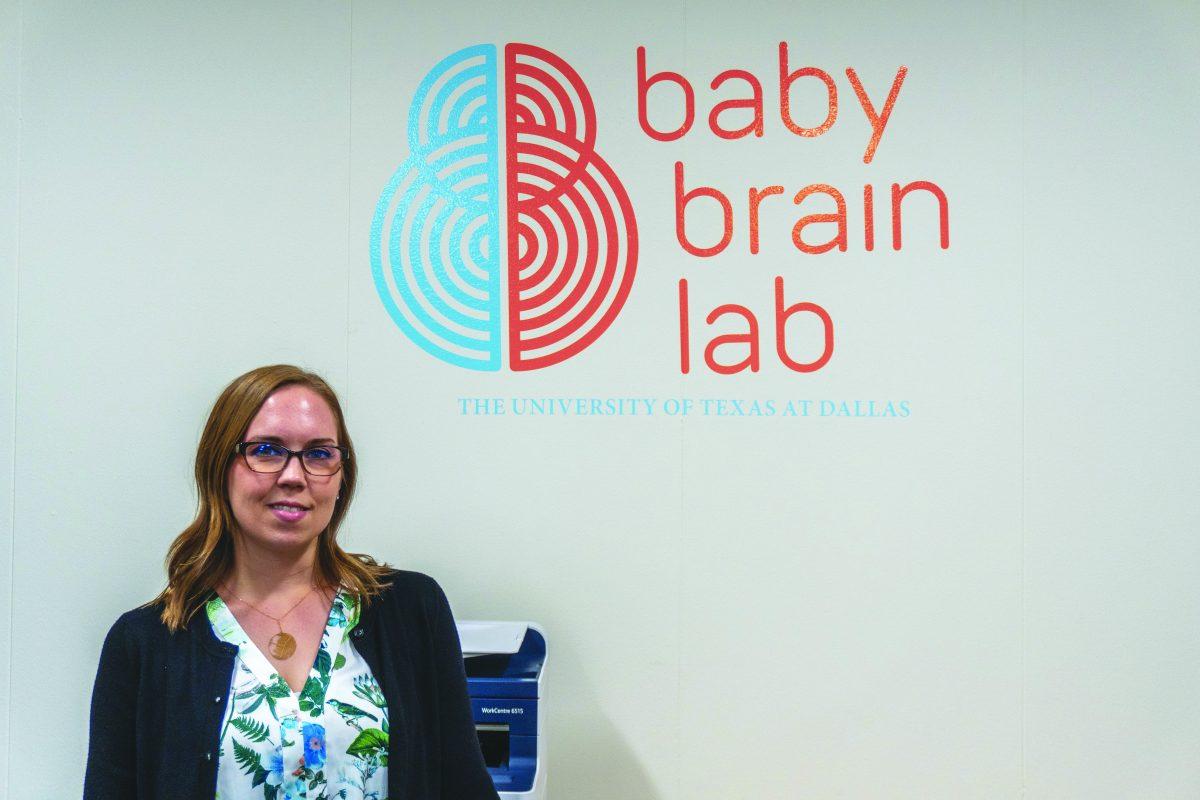Caregiver speech correlated to language skills in infants at risk for autism
Researchers at UTD recently found that “baby talk” correlates to improved language skills in infants at a higher risk for autism. They hope the data will provide a path toward improved early education for these children.
UTD researchers worked in conjunction with the Infant Brain Imaging Study Network on a 10-year-long project tracking the speech exposure of infants with and without a higher risk of autism.
Meghan Swanson, director of the Baby Brain Lab and assistant professor in the School of Behavioral and Brain Sciences’ psychology department is a corresponding researcher in the study.
“I study how caregiver’s speech supports early development in infants. We use these daylong home language recorders to collect recordings that are sixteen hours in length and from those recordings we can generate counts of how much the infant is vocalizing and how much language exposure they’re experiencing,” Swanson said. “From that we can determine if different factors from caregivers’ speech is supporting language development in these infants.”
The study was conducted on 96 infants, some of whom had a high familial risk of autism.
“These are babies that have an older sibling with autism and due to the genetic liability of autism they are at an increased risk of developing autism themselves so about 20% of them go on to have autism,” Swanson said.
Swanson said the study suggested that caregiver speech across all infant groups correlated to better language skills later on in life. Child language skills were assessed at 24 months through the Mullen Scales of Early Learning, an assessment that measures infants’ cognitive ability and motor development.
“There’s a standard set of tasks and probes that the clinician does that the infant engages with and from that you can create scores based on how the kid is performing in relation to the general population and determine if the kid is performing where they should be or if their language is advanced or delayed,” Swanson said.
The infants start the study when they are six months of age and continue until they are 24 months of age, with some of the children being seen again at 36 months to confirm an autism diagnosis, Swanson said. She added that the length of the study made data collection difficult at times.
“Any time you’re doing longitudinal data where you’re following the same child or infant over multiple time periods, there’s also a challenge associated with keeping families in the study,” Swanson said. “You want to make sure that they’re enjoying their experience in the study and that they’re invested in the research. Otherwise families will sometimes drop out of a study and that can create a challenge from a statistical standpoint as well.”
Another challenge in a study like this, Swanson said, was the geographical distance between participants and the overall time period of the study.
“The infants that participated in this study were coming from all over the continental United States. These families are actually flown to the closest clinical data collection sites to do the baby IQ tests,” she said. “We were doing these home language recordings obviously in their homes so that meant that we had to send via FedEx these packages of all the equipment and then communicate with them long distance and have them send it back to us. I think that there’s just logistical challenges that arose just by the nature of the design.”
Swanson said she thinks the major contributions of the paper include taking well-known ideas about speech and language development and applying them to autism.
“You could potentially target caregiver speech (and) do an intervention where you encourage parents to talk more to their children,” she said. “Provide them specific examples of the type of speech they should be using at different developmental periods and then you can potentially change developmental trajectories in these kids.”











